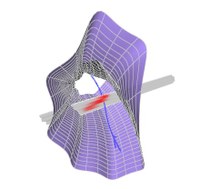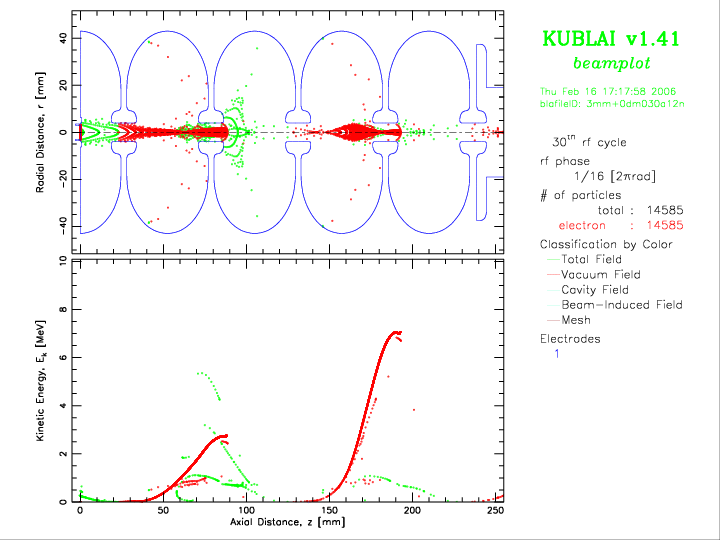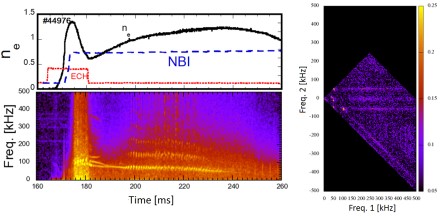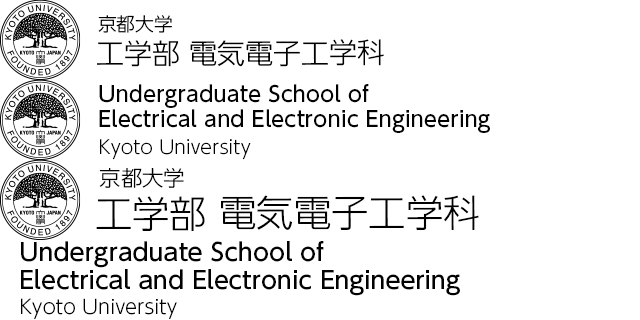Advanced Particle Beam Energy (Highly Quialified Energy Conversion)
For the 21st century's advanced sciences and technologies to bring about enormous contributions to the human beings, advanced and innovative control methods are being developed by highly controlling the interactions between charged particles and electromagnetic waves. We are focusing on improvement and understanding of confinement and transport in fusion plasma produced and heated by electromagnetic waves, development of heating and current drive systems using high power millimeter waves, development and application of compact and portable neutron/proton sources driven by fusion plasmas, and production of highly brilliant relativistic electron beam for advanced light sources such as free electron lasers.
Academic Staff
Kazunobu NAGASAKI
Professor (Institute of Advanced Energy)
Research Interests
- magnetic confinement of fusion plasma
- electron cyclotron heating and current drive
- millimeter wave technology
Contacts
Uji Campus, Main Bldg. N242
TEL: +81-774-38-3440
FAX: +81-774-38-3449
E-mail: nagasaki(a)iae.kyoto-u.ac.jp
Kai MASUDA
Associate Professor (Institute of Advanced Energy)
Research Interests
- high-brightness electron beam
- free electron laser
- compact fusion-driven neutron/proton source
Contacts
Uji Campus Main Bldg. N248
TEL: +81-774-38-3442
FAX: +81-774-38-3449
E-mail: masuda(a)iae.kyoto-u.ac.jp
Shinsuke OHSHIMA
Assistant Professor (Institute of Advanced Energy)
Research Interests
- magnetic confinement of fusion plasma
- plasma turbulence
- plasma diagnostics
- fluctuation analysis
Contacts
Uji Campus, Main Bldg. N250
TEL: +81-774-38-3441
FAX: +81-774-38-3449
E-mail: ohshima(a)iae.kyoto-u.ac.jp
Introduction to R&D Topics
Plasma production, heating and current drive by electron cyclotron waves
In fusion reactors expected as a promising energy sources, electromagnetic waves of GHz frequency region are widely utilized for plasma production, heating and current drive. Understanding of heating mechanism and development of heating technology is an important issue for stable steady-state plasmas. Pursued are experimental and theoretical analyses of electron cyclotron heating and current drive, and suppression of MHD instabilities such as neoclassical tearing mode and energetic-particle driven modes by using high power microwave sources such as magnetron and gyrotron.


Development and application of high power microwave systems
High power microwaves exceeding kW power are widely used as a coherent electromagnetic wave source for many purposes such as plasma heating, large charged-particle accelerator, and development of high-quality ceramics. Contribution is made to main heating and current drive systems for present experimental plasma devices and future devices such as ITER, JT-60SA and spherical tori, and the application of high power microwaves to wide scientific fields are also developed.

High-brightness electron beam production by a microwave gun
The electron beams are accelerated up to 99.8 % of the light velocity (9 MeV) in the 23 cm length gun and led to the KU-FEL accelerator. Experimental and numerical studies are being made for improved beam properties, such as development of advanced beam diagnostic methods, numerical code development and analyses of beam-microwave interactions and design refinement of the gun.


Inertial electrostatic confinement fusion neutron /proton source
Ions focused toward the gridded cathode center undergo fusion reactions. A dc neutron yield larger than 107 n/s has been achieved so far. A potential advantage of the fusion-driven proton source is that the produced proton gains a huge energy of 14.7 MeV from D-3He reaction with a moderate applied voltage of tens kV. Performance improvement of the fusion-driven neutron/proton sources and their applications such as detection of illicit materials are being pursued.

Measurements and analyses of fluctuations in high temperature plasmas
Study of physical mechanism of fluctuations existing inside a high temperature plasma is a key issue to achieve high performance plasmas because a variety of instabilities can act to enhance plasma transport, which determines the plasma confinement properties. Advanced diagnostic tools with higher spatio-temporal resolutions such as microwave diagnostics and multi-channel Langmuir probes and novel technique of fluctuation data analysis are being developed.

